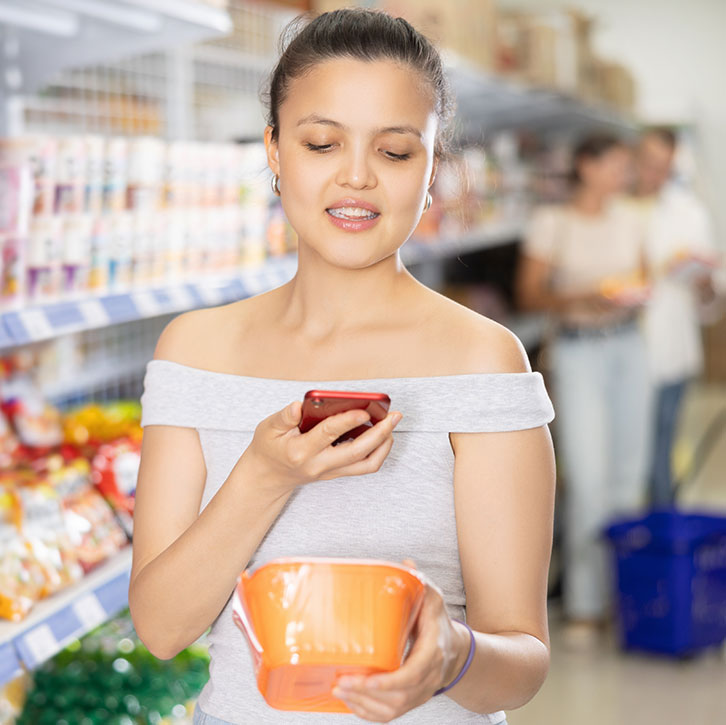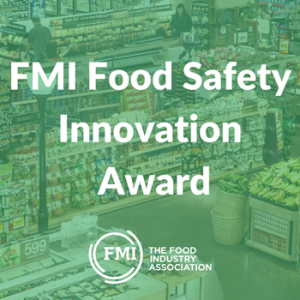<p>By: Steve Markenson, Vice President, Research & Insights, FMI</p><div class="mg-image–circular" style="float:right;margin:10px;"><img sf-custom-thumbnail="true" src="https://www.fmi.org/images/default-source/blog-images/digitally-engaged-young-shopper-sq.jpg?sfvrsn=496ed7d7_1" sf-size="100" width="600" alt="GenZ grocery shopper" sf-constrain-proportions="true" /></div><p>Technology is reshaping the modern grocery shopping experience, blending convenience with innovation to enhance every step of the process. Today, nearly every shopper interacts with digital tools in some way, but how and to what extent varies widely.</p><h5>How do shoppers purchase?</h5><p>Only a small portion of shoppers — about 10% — are fully reliant on online grocery shopping, making nearly all their purchases digitally. At the other extreme are the one-third of shoppers who only shop in-store, making no purchases online. The majority, however, take a hybrid approach, shopping both online and in-store to varying degrees. </p><p>Those who do at least some of their grocery shopping online are from every generation, gender, racial or ethnic group, or type of household. They are everywhere. They skew towards younger generations, particularly millennials, households with kids particularly younger kids due to their busy lifestyles. But as Boomers and GenXers continue to age, they will be moving to online grocery shopping as a matter of need not want. We also find with higher population density, online grocery shoppers skew toward living in urban and suburban areas.</p><p>At the 2017 FMI Midwinter Executive Conference, Nielsen and FMI released an introductory set of insights to understand the digitally engaged grocery shopper. At that time, we projected that by 2025, 20% of grocery shopping would be done online, representing $100 billion in sales. Fast forward to January of 2020, just before the COVID-19 pandemic, we talked about the "size of the prize" by 2025 being an 18% market share that would represent $143 billion in sales. A lot has happened in the past five years — a pandemic, spikes in inflation — but the reality is the market share for online grocery is right on target for what we projected. The <em><a href="https://www.fmi.org/forms/store/ProductFormPublic/the-digitally-engaged-grocery-shopper-2025">Digital Engagement Transforms Grocery Shopping</a></em> report reveals that the size of the prize is expanding significantly. Total U.S. online sales for grocery items are projected to reach an almost 25% market share and $388 billion by 2027.</p><h5>How are shoppers digitally influenced?</h5><p>It’s important to keep in mind that digital engagement comes in many ways for shoppers. Shoppers are using mobile devices to assist with in-store shopping, for needs ranging from price comparisons to meal planning. In fact, the quality of a store’s app plays a role in whether shoppers decide to make it their primary store. Shoppers now customarily rely on their digital coupon and shopping list functions to stay focused and avoid impulse purchases. Mobile apps showcase retailers’ prized personalization platforms offering customized deals, real-time updates on prices and promotions, loyalty rewards, purchase histories and much more. </p><p>The increased usage of grocery store apps among some shoppers has corresponded with greater expectations of apps. As grocery store app usage grows, so do shoppers’ expectations. This is especially true among younger shoppers, particularly Gen Z, who are the most likely to evaluate a store based on the quality of its apps. </p><p>Brands are increasing the number of ways shoppers can digitally access product information, and shoppers say they would take advantage of these tools if given the opportunity. More than 80% of shoppers said they would be likely to seek more product details — regardless of whether they are in-store or online — by making use of a QR code, website, app or other tool. </p><p>According to FMI’s newly released <a href="https://www.fmi.org/forms/store/ProductFormPublic/grocery-shopper-snapshot-2025-january"><em>January Grocery Shopper Snapshot</em></a><em>,</em> more than half of shoppers have used AI, up from about one-third just a year ago. Shoppers are turning to AI for everything from meal planning to diet advice and party inspiration. With AI still in its infancy, the possibilities are limitless — who knows what’s next?</p><p>For more on how shoppers are getting digital, download the <em><a href="https://www.fmi.org/forms/store/ProductFormPublic/the-digitally-engaged-grocery-shopper-2025">Digital Engagement Transforms Grocery Shopping</a></em> report.</p><p><a href="https://www.fmi.org/our-research/research-reports" class="button">Research Resources</a></p>
[#item_full_content]




